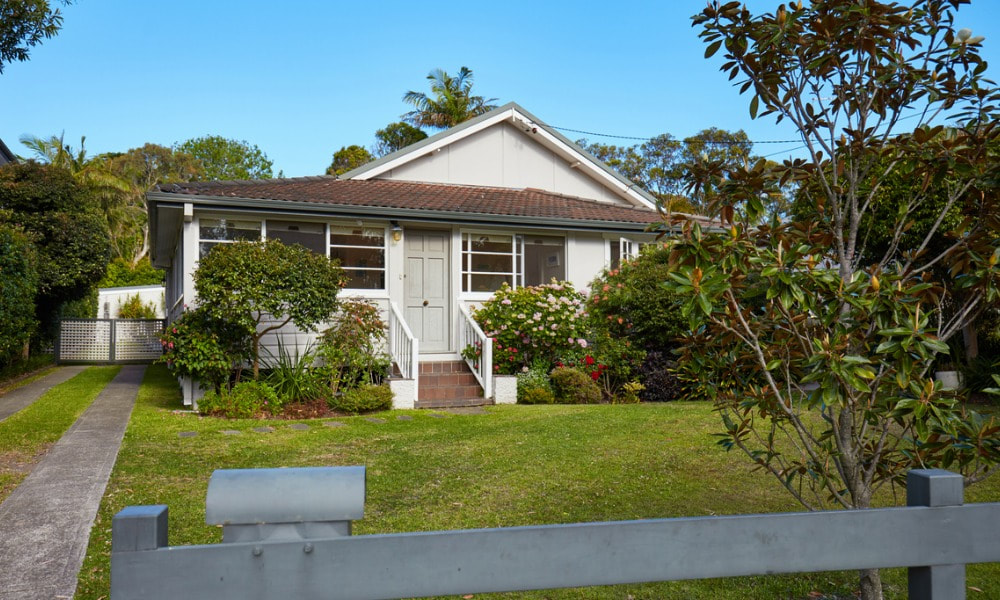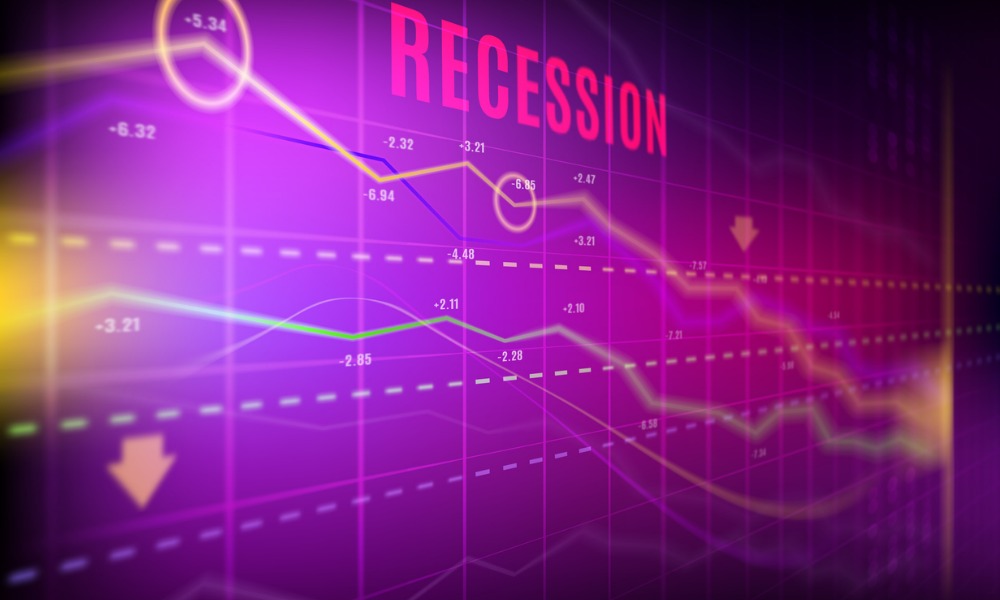|
Activity is now down 77% since the start of the year.
Refinance dollar volume decreased again last week as record-high mortgage rates continue to repel potential buyers from refinancing. Fannie Mae reported a 17.7% decrease in the dollar volume of refinance applications for the week ending October 21. Compared to the same week last year, Fannie’s Refinance Application-Level Index (RALI) was down 86.6%. The RALI count posted an 18.2% week-over-week decline and was down 85.6% year over year. “Since the beginning of August, mortgage rates have increased almost 200 basis points, driving down the share of outstanding loans with incentive to refi,” said Fannie Mae chief economist Doug Duncan. “The overall level of refinancing activity is down 57% over the past two months and down 77% since the beginning of the year.” The refi dollar volume was 91.2% lower than during the refinance boom in the third quarter of 2020. Compared to the “refi slowdown” in the fourth quarter of 2018, refinance applications were down by 39%. The Mortgage Bankers Association projected that economic headwinds and the housing market crunch in 2023 will drive a 3% drop in purchase originations and a 24% plunge in refinance volume.
0 Comments
Mortgage demand remains lackluster.
Mortgage application activity has remained at its slowest pace since 1997 as rising interest rates continue to depress demand for home loans. According to the Mortgage Bankers Association, mortgage application volume dropped 1.7% on a seasonally adjusted basis from the week prior. Unadjusted, applications were down by 2% week over week. “Mortgage rates increased for the 10th consecutive week, with the 30-year fixed rate reaching 7.16%, the highest rate since 2001,” said MBA deputy chief economist Joel Kan. Refinance application activity was virtually unchanged, posting a 0.1% gain from the previous week. Consequentially, the refi share of mortgage activity grew five basis points to 28.8%. Meanwhile, purchase applications fell 2% to the slowest rate since 2015 – 42% behind last year’s pace. “Despite higher rates and lower overall application activity, there was a slight increase in FHA purchase applications, as FHA rates remained lower than conventional loan rates,” Kan said. “MBA’s forecast expects both economic and housing market weakness in 2023 to drive a 3% decline in purchase originations, while refinance volume is anticipated to decline by 24%.” MBA anticipates total mortgage origination volume to decrease to $2.05 trillion in 2023, down from its $2.26 trillion forecast in 2022. “MBA’s forecast calls for a recession in the first half of next year, driven by tighter financial conditions, reduced business investment, and slower global growth,” Kan said. “As a result, the unemployment rate will increase from its current rate of 3.5% to 5.5% by the end of the year. Inflation will gradually decline towards the Fed’s 2% target by the middle of 2024.” Mortgage demand remains lackluster.
Mortgage application activity has remained at its slowest pace since 1997 as rising interest rates continue to depress demand for home loans. According to the Mortgage Bankers Association, mortgage application volume dropped 1.7% on a seasonally adjusted basis from the week prior. Unadjusted, applications were down by 2% week over week. “Mortgage rates increased for the 10th consecutive week, with the 30-year fixed rate reaching 7.16%, the highest rate since 2001,” said MBA deputy chief economist Joel Kan. Refinance application activity was virtually unchanged, posting a 0.1% gain from the previous week. Consequentially, the refi share of mortgage activity grew five basis points to 28.8%. Meanwhile, purchase applications fell 2% to the slowest rate since 2015 – 42% behind last year’s pace. “Despite higher rates and lower overall application activity, there was a slight increase in FHA purchase applications, as FHA rates remained lower than conventional loan rates,” Kan said. “MBA’s forecast expects both economic and housing market weakness in 2023 to drive a 3% decline in purchase originations, while refinance volume is anticipated to decline by 24%.” MBA anticipates total mortgage origination volume to decrease to $2.05 trillion in 2023, down from its $2.26 trillion forecast in 2022. “MBA’s forecast calls for a recession in the first half of next year, driven by tighter financial conditions, reduced business investment, and slower global growth,” Kan said. “As a result, the unemployment rate will increase from its current rate of 3.5% to 5.5% by the end of the year. Inflation will gradually decline towards the Fed’s 2% target by the middle of 2024.” Sales decline as more first-time homebuyers get priced out of the market.
New home sales posted a double-digit decline in September after a short-lived rebound the month before. Sales of new single-family houses in September plunged 10.9% to a 603,000 seasonally adjusted annual rate, according to newly released data by the Census Bureau. The decline followed a brief uptick in August (677,000) and was down 14.3% compared to 2021. Kelly Mangold, principal at RCLCO Real Estate Consulting, noted a “mismatch between today’s elevated prices and buyers’ budgets, which has sidelined many buyers in the near term.” “Motivated buyers who are able to stomach the rate increase or who may be buying in cash are encountering a much less competitive buying landscape than earlier this year,” she said. “It remains to be seen the extent to which product and pricing will adjust, but if rates continue to rise, it is likely that we will see the for-sale market continue to slow towards year’s end – and prices of homes will continue to adjust downward. “This is all happening at a time when there remains a strong demographic demand for new for-sale homes due to millennials having children, pandemic increases in pet ownership, and the widespread adoption of hybrid/remote working.” Mangold stressed that people’s need for more space indicates a significant pent-up demand for when conditions begin to improve. The count of new single-family homes for sale stayed elevated at 462,000 units, up 23.2% year over year and represented a 9.2 months’ supply (of varying stages of construction). Of this total figure, only 56,000 of the new home inventory is completed and ready to occupy. The remaining have not started construction or are currently under construction. “Builders continue to face lower buyer traffic due to declining affordability conditions as the housing downturn continues,” said Jerry Konter, chairman of the National Association of Home Builders (NAHB). “Builder sentiment has declined for 10 consecutive months. The entry-level market in high-cost areas has been particularly affected, with growing numbers of first-time and first-generation buyers priced out of the market.” Reflecting rising construction costs, the median sales price of new homes sold in September was $470,600 (up 13.9% from a year ago), and the average sales price was $517,700. “However, NAHB surveys indicate that a quarter of builders are now cutting prices. Thus recent months’ price data reflects a composition change, with sales lost at the low end of the market pushing the median price higher,” the association said in a statement. “In September 2022, there were 20,000 sales priced below $300,000. In September 2021, sales in this price range totaled only 6,000.” Rates surpass 7% for the first time since 2001.
Long-term mortgage rates have topped 7% for the first time in 20 years, further cooling the housing market. The Mortgage Bankers Association reported Wednesday that the contract rate on a 30-year fixed home loan jumped 22 basis points to 7.16% in the week ended Oct. 21 – the highest since 2001. Mortgage rates increased for the 10th time, driving down demand significantly. Overall mortgage application volume dipped 1.7% week over week, according to the MBA. Refinance applications saw a 0.1% gain from the week prior, while purchase applications declined 2% to the slowest pace since 2015. “Despite higher rates and lower overall application activity, there was a slight increase in FHA purchase applications, as FHA rates remained lower than conventional loan rates,” said Joel Kan, MBA’s deputy chief economist. “MBA’s forecast expects both economic and housing market weakness in 2023 to drive a 3% decline in purchase originations, while refinance volume is anticipated to decline by 24%.” With mortgage demand cooling rapidly, home price growth has slowed considerably across many markets. New data from the S&P CoreLogic Case-Shiller index showed that national home price appreciation decelerated to a 13% annual rate in August, down from 15.6% the month before. “The -2.6% difference between those two monthly rates of change is the largest deceleration in the history of the index (with July’s deceleration now ranking as the second largest),” said Craig Lazzara, managing director at S&P DJI. “As the Federal Reserve moves interest rates higher, mortgage financing becomes more expensive, and housing becomes less affordable. Given the continuing prospects for a challenging macroeconomic environment, home prices may well continue to decelerate.” The purchasing power of mortgage borrowers continues to shrink.
After months of massive rate increases, homebuyer affordability worsened in September as home financing became more expensive. Borrower affordability conditions declined further as the national median payment applied for by mortgage applicants jumped to $1,941 in September from $1,839 in August, according to the Mortgage Bankers Association (MBA). MBA's Purchase Applications Payment Index (PAPI) increased 5.5% to 163.6 month over month, ending four consecutive months of decline. The September increase indicates that the mortgage payment to income ratio (PIR) is higher due to increasing application loan amounts, rising mortgage rates, or a decrease in earnings. "Homebuyer affordability took an enormous hit in September, with the 75-basis-point jump in mortgage rates leading to the typical homebuyer's monthly payment rising $102 from August," said Edward Seiler, associate vice president of housing economics at MBA. "With mortgage rates continuing to rise, the purchasing power of borrowers is shrinking. The median loan amount in September was $305,550 – much lower than the February peak of $340,000." The national median mortgage payment was $1,941 in September, up from $1,839 in August and was 40.4% higher in the first nine months of the year. For borrowers applying for lower-payment home loans (the 25th percentile), the national mortgage payment rose to $1,271 in September from $1,210 the previous month. "MBA expects supply and affordability constraints and economic uncertainty to continue to hamper the purchase market. Purchase origination volume is forecast to decrease 3.3% next year to $1.53 trillion," Seiler said. Additional key findings were:
Highest level for 30-year fixed-rate mortgages since 2002.
It’s official - mortgage rates have reached their highest level in more than 20 years. According to Freddie Mac’s widely used benchmark, the 30-year fixed-rate mortgage averaged 7.08% in the week ending October 27, up from 3.14% a year ago. The last time the average rate went beyond 7% was in April 2002. Mortgage rates have more than doubled since the beginning of the year and been increasing almost week by week since the end of August, much in response to the Federal Reserve’s efforts to rein in inflation, which currently stands close to a 40-year high of 8.2%. At the same time, compared to a year ago, refi loan volume has slumped by 86% and purchase demand is down 39% as borrowers feel the pinch. In response to the latest data, Kate Wood, home expert at NerdWallet, agreed that the announcement, although unsurprising, was significant as it came from Freddie Mac. She said: “Many lenders have been quoting 30-year fixed rates above 7% for almost a month, but… if Freddie Mac shows 7% rates, they're definitely happening. Interest rates on 30-year, fixed-rate home loans have now risen almost four full percentage points in 2022, making homeownership unaffordable for many would-be buyers. The last time mortgage rates climbed this fast was in 1981, after a series of aggressive Federal Reserve rate increases.” Dean Rathbun, Mortgage Loan Officer at California-based United American Mortgage, said he had noted a slowdown in the total number of mortgage applications, although activity remained brisk as people were “calling daily” to calculate monthly payments and costs, which he said would eventually turn into closed loans. He added: “We are seeing a flushing out of people in the mortgage industry for sure and many companies that have decided to close and step out of the arena altogether. It has created opportunities for companies like ours to acquire great talent, which we are excited about. “We are also working diligently on making sure we have all products available so that our loan officers can succeed. We find that most consumers agree that rates should come down in the next 24-36 months, so we are seeing very high activity on our seven-year ARM products. We do agree this is wise consumer choice for now since those rates are still around 6% and are stable for quite some time.” However, he said he hoped to see the end of Fed rate hikes, at least for now. “In my opinion, they truly need to let the higher rates settle for a quarter or two. They can then analyze the data, as we feel the result would be satisfactory that they cooled the real estate market.” Yury Shraybman, broker at Innovative Mortgage Brokers in Philadelphia, echoed the view. He said: “Once the market feels comfortable that the Fed is doing a good job of controlling inflation, long term loan rates should come down. I expect this to happen in the beginning of next year.” Jeremy Schachter, Arizona-based branch manager at Fairway Independent Mortgage, said the highest interest rates in decades had “definitely” had an impact on qualifying borrowers as well as prompting a “slight pause” in purchase loans. However, he added: “Normally, it does slow this time of year going into the holiday season. Many sellers don’t want their homes on the market when they have family in town. That being said… I am seeing sellers giving large concessions to buy down the rate (permanent and temporary buydown 2/1).” Nadia Evangelou, senior economist and director of forecasting at the National Association of Realtors (NAR), focused on how higher interest rates were affecting minority groups. She said: “Rising mortgage rates have increased the monthly mortgage payment by $1,000, and minority groups may be impacted more heavily. Although mortgage rates reached all-time lows in 2021, not everybody was able to benefit from these low rates. “During 2019 and 2021, the White homeownership rate rose by nearly three percentage points, while the homeownership rate for Black Americans rose by two percentage points. With 7% mortgage rates, only 15% of Black households can currently afford to buy the typical home compared to 30% of White households. Thus, Black families may fall further behind in homeownership compared to their White counterparts.” We look at home value-to-income ratio, median home prices, and other factors As home prices continue to rise, many Americans are searching for affordable properties outside of the major centres. While New York, Los Angeles, and San Francisco continue to be out of reach for many prospective homebuyers, there are options. If you are willing to move, and are able to work remotely, you may be in luck. Here are 10 of the most undervalued housing markets in the US. 10 most undervalued housing markets Dallas-Fort Worth, Texas. The home value-to-income ratio in Dallas-Fort Worth is 3.0 compared to the US national average at 3.3. When compared to other major cities, Dallas-Fort Worth looks even better: Los Angeles has a ratio of 7.9, Austin’s ratio is 4.0, and San Francisco is at 6.0. And compared with most of the places on this list, it has the highest share of the population between the ages of 25-44, comprising 29.1% of the population compared to the national average of 26.7%. It also helps that it is located in Texas, which has no state tax and affordable home prices. Daphne-Fairhope-Foley, Alabama. In terms of population growth, this metro area in Alabama is one of the fastest-growing in the US. The increase in population between 2017 and 2020 was 7.8% compared to the national average of 1.3%. Weekly wages rose cumulatively 36.6% from Q2 of 2018 to Q2 of 2021, while house prices only increased by 17.7%. From 2018-2021, non-farm payroll employment increased at the second-highest rate of 5.7% compared to an overall drop in jobs of 1.4%. Fayetteville-Springdale-Rogers, Arkansas-Missouri. The home value-to-income ratio here is 2.7, with Fayetteville metro seeing the largest cumulative job growth over the last three years. And wage gains have kept pace with the increase in home prices: from Q2 of 2018 to Q2 of 2021, house prices increased at a cumulative rate of 19.1%, with a 21% rise in average weekly wages for the same period. That strong job growth is expected to spur further wage increases this year, which may increase demand for homes—and boost prices. Huntsville, Alabama. This area also boasts a solid home value-to-income ratio, coming in at 2.6. While home prices rose 24.6% compared to wage increases of 13.4% over three years, jobs have also increased (4.7%), as has population (5.6%). Both are higher than the national averages. Huntsville, Alabama, also earned the fifth spot for career opportunities out of a list of 200 metros. Knoxville, Tennessee. This city offers some of the most affordable home prices of any place on this list, with a median property value of $288,878. With a home value-to-income ratio of 2.7, Knoxville has become an attractive place to move to, with 10,000 relocating there in 2020. However, home prices are increasing at a cumulative three-year pace of 22.4%, which is faster than cumulative wage growth (16.5%). This will likely matter less if you are a retiree. On a recent list Knoxville came in at number four for most affordable cities for retirees. Palm Bay-Melbourne-Titusville, Florida. With a home value-to-income ratio of 2.9, Palm Bay-Melbourne-Titusville, Florida, is more attractive than other Florida metros like Miami (4.7), Orlando (3.9) and Sarasota (3.8). Over the past three years, this part of Florida has had the second-fastest wage growth (27.2%) of all the cities on this list. An added attraction for remote workers is that it has the highest share of households with broadband services, at 78.3%. Pensacola-Ferry Pass-Brent, Florida. Pensacola-Ferry Pass-Brent, Florida, shares the same home value-to-income ratio as Palm Bay-Melbourne-Titusville. While this has been a hotspot for retirees, it has also become more appealing to remote workers due in part to its broadband service (74.2% of households) and its beautiful beaches. San Antonio-New Braunfels, Texas. The San Antonio metro area has a median home value of just $227,784 and has the second highest (compared to Dallas) net domestic migration in 2020 at nearly 26,000 people. For the sake of comparison, other Texas metros compared this way in median home value: Austin at $410,653, Dallas at $293,976, and Houston at $245,098. Over a three-year period ending in 2020, that affordability spurred its population to increase by 4.8%. Spartanburg, South Carolina. Two facts that make Spartanburg, South Carolina, a hidden gem on this list is its 2.5 home value-to-income ratio and its median home value of $181,571. Located between Charlotte and Greenville, Spartanburg also boasted the second-greatest population growth in the US from 2017 to 2020. Tucson, Arizona. When compared to Phoenix, Tucson is very affordable. The median property value in Arizona’s second city is $261,046 compared to $364,186 in Phoenix. And when compared to many other undervalued markets on this list, Tucson had the third-largest net domestic migration in 2020 with 10,778. Housing market downturn expected to worsen.
The slowdown in the US economy will be as “equally sharp” as the housing market collapse, the Mortgage Bankers Association said. Total mortgage origination volume is projected to decline to $2.05 trillion in 2023, down from MBA’s $2.26 trillion prediction in 2022. Purchase originations are anticipated to shrink by 3% to $1.53 trillion, while refinance volume will likely plummet 24% to $513 billion. “Next year will be particularly challenging for the US and global economies,” said MBA chief economist Mike Fratantoni. “The sharp increase in interest rates this year – a consequence of the Federal Reserve’s efforts to slow inflation, will lead to an equally sharp slowdown in the economy, matching the downturn that is happening right now in the housing market. “MBA’s forecast calls for a recession in the first half of next year, driven by tighter financial conditions, reduced business investment, and slower global growth. As a result, the unemployment rate will increase from its current rate of 3.5% to 5.5% by the end of the year. Inflation will gradually decline towards the Fed’s 2% target by the middle of 2024.” After more than doubling this year, MBA’s baseline forecast is for mortgage rates to end 2023 at around 5.4%. Deputy chief economist Joel Kan noted that the slowdown in housing activity and higher mortgage rates will quickly cut the rate of home-price growth. “MBA expects national home prices will be roughly flat in 2023 and 2024, allowing household incomes some much-needed time to catch up to elevated property values,” he said. “However, many local markets will see home-price declines, even if national price measures remain largely unchanged.” Production profitability will also be negative in 2022 for the first time in four years, according to Marina Walsh, vice president of industry analysis at MBA. Additionally, the mortgage industry will see about 25% to 30% in employment, given the decrease in production volume from record levels in 2020 and 2021. “Origination volumes have declined, revenues have dropped, and expenses continue to rise,” said Walsh. “Lenders have started to shrink excess capacity by reducing staffing levels, exiting less profitable channels or exiting the business entirely.” On the mortgage servicing segment, Walsh added that profits have rebounded in 2022. Mortgage servicers are benefitting from slower prepayments and low delinquencies that have helped boost mortgage servicing right (MSR) valuations. “The national mortgage delinquency rate reached a record low in the second quarter of 2022 but will likely increase with the uptick in unemployment and the destruction caused by Hurricane Ian in Florida, South Carolina, and other nearby states,” she said. The 30-year mortgage rate reaches highest level in 20 years.
Mortgage rates hit their highest level in over two decades, with the 30-year rate just a few basis points shy of 7%. The popular 30-year fixed-rate mortgage resumed its ascent after a brief pause last week, up 26 basis points to 6.92% as of October 13. Freddie Mac chief economist Sam Khater said this is the highest the 30-year interest rate has been since April 2002. The average 15-year fixed-rate mortgage rose from 5.90% last week to 6.09%, while the five-year Treasury-indexed hybrid adjustable-rate mortgage averaged 5.81% – up from 5.36% a week ago. “We continue to see a tale of two economies in the data: strong job and wage growth are keeping consumers’ balance sheets positive, while lingering inflation, recession fears and housing affordability are driving housing demand down precipitously,” Khater added. “The next several months will undoubtedly be important for the economy and the housing market.” In September, the Bureau of Labor Statistics reported a 263,000 increase in nonfarm employment, a modest deceleration from the 315,000 job gains in August. According to Fannie Mae, the drop in the number of job openings indicates labor demand may be starting to come into better balance with supply. “We anticipate this trend to continue and see this as consistent with our current forecast of a recession likely occurring in the first quarter of 2023, as well as an end to the Fed’s policy tightening sometime thereafter,” Fannie Mae said in its latest forecast. “In the near term, we continue to expect further tightening past the end of 2022.” “Of course, the slowing effect on the housing market of the higher mortgage rate environment has been largely predictable, and home prices appear to have already begun trending downward,” said Doug Duncan, chief economist of Fannie Mae. “Looking ahead to the full year 2023, on a national basis, we expect an average home price decline of 1.5%. Given the ongoing tension between potential homebuyers and home-sellers at the moment, we believe the pace of sales is likely to slow even further, too.” |
|
- iMove Chicago
- Real Estate School
-
Laws
-
CRLTO
>
- 5-12-010 Title, Purpose And Scope.
- 5-12-020 Exclusions.
- 5-12-030 Definitions.
- 5-12-040 Tenant Responsibilities.
- 5-12-050 Landlord’s Right Of Access.
- 5-12-060 Remedies For Improper Denial Of Access.
- 5-12-070 Landlord’s Responsibility To Maintain.
- 5-12-080 Security Deposits.
- 5-12-081 Interest Rate On Security Deposits.
- 5-12-082 Interest Rate Notification.
- 5-12-090 Identification Of Owner And Agents.
- 5-12-095 Tenants’ Notification of Foreclosure Action.
- 5-12-100 Notice Of Conditions Affecting Habitability.
- 5-12-110 Tenant Remedies.
- 5-12-120 Subleases.
- 5-12-130 Landlord Remedies.
- 5-12-140 Rental Agreement.
- 5-12-150 Prohibition On Retaliatory Conduct By Landlord.
- 5-12-160 Prohibition On Interruption Of Tenant Occupancy By Landlord.
- 5-12-170 Summary Of Ordinance Attached To Rental Agreement.
- 5-12-180 Attorney’s Fees.
- 5-12-190 Rights And Remedies Under Other Laws.
- 5-12-200 Severability.
- Illinois Eviction Law (Forcible Entry And Detainer)
- Illinois Security Deposit Return Act
-
CRLTO
>
- Today's Cool Thing
- Social Media












